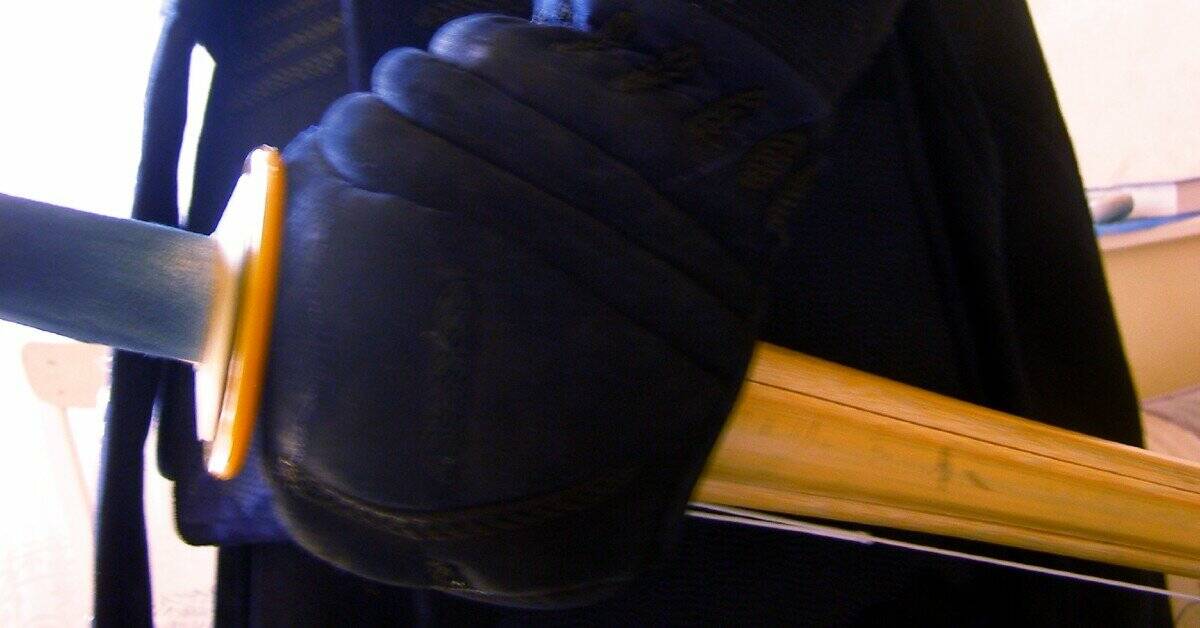Most well-known martial arts don’t have weapons and they disallow their usage in fights, but there are some martial arts – especially from the Far East – that are based on weapons and their usage.
One prominent example is the Japanese martial art of kendo, but I am not going to talk about kendo, but rather about a very interesting weapon called a jō staff.
A jō is a staff used in some Oriental martial arts and I am going to present to you everything you need to know about it.
The Name of Jo Staff
Before I start off with the practicalities, I have to say something about the name of this staff. Namely, this type of staff is called a jō (Japanese: じょう).
Unlike the more famous bō staff, the jō staff can easily be called “a jō staff”, because the name does actually signify a special type of staff, unlike the bō, which literally means “staff” in Japanese, which is why it is wrong and redundant to use the phrase “bō staff”.
What Is a Jo Staff?
The jō is a staff weapon used in several different Japanese martial arts. Unlike the bō, this staff is more focused on Japan itself than the island of Okinawa, where a lot of Japanese martial arts stem from, including the techniques of using the bō.

How Long Is a Jo Staff?
A jō staff is usually around 4.2 ft (1.27 meters) long. [1]
It is made of wood. The material can be hard or flexible, depending on what you want to do with the staff and what you want to achieve.
Some commonly used materials are oak (red or white), bamboo, pine, and rattan.
The usual thickness is around 1 inch (2.2 cm).
History of the Jo Staff
The techniques for jō were, according to legend, reportedly invented by famous swordsman Musō Gonnosuke Katsuyoshi (Japanese: 夢想 權之助 勝吉) after he was defeated by yet another famous swordsman, Miyamoto Musashi (宮本 武蔵), sometime in the early 17th century.
These two famous samurai fought each other in a duel sometime between 1608 and 1611, according to Kenji Tokitsu, a well-known contemporary author.
The record mentioning this duel, the Nitenki, recounts:
When Musashi was in Edo, he met an adept named Musō Gonnosuke, who asked to fight him. Gonnosuke used a wooden sword. Musashi was in the process of making a small Bo; he picked up a piece of firewood. Gonnosuke attacked him without even bowing, but he received a blow from Musashi that made him fall down. He was impressed and left.
Kenji Tokitsu
A different source, the famous Kaijo Monogatari, differs considerably from the version presented in the Nitenki.
In it, Gonnosuke is described as a boastful and brash warrior who duels Musashi on several occasions, intending to see how Musashi compares with Musashi’s father in swordsmanship.
The fight occurs in Akashi, not Edo (modern-day Tokyo), and Gonnosuke wields a staff four shaku (a Japanese foot, see our [article on the bō for more details]) in length and reinforced with steel rings.
After his defeat, he then went to Mount Hōman-zan in Chikuzen (near Fukuoka), where he practiced considerably, changing his preferred weapon to four shaku and two sun in length – 4.2 feet as compared to 4 feet.
This school was called the Shintō Musō-ryū because of Gonnosuke’s previous training under Sakurai Osuminokami Yoshikatsu of the Shintō-ryū.
The school he founded to transmit his techniques also has some old records in the archive, which claim that Gonnosuke, struck by his defeat, actually went into solitary meditation until he received divine inspiration in a dream; he then invented techniques to fight against Musashi’s two swords using only a stick and defeated Musashi on their next encounter.
Assuming the records are accurate and true, this would be the only time Musashi was defeated, as the vast majority of documentation states that Musashi was never defeated.
The Jo Staff in Martial Arts
As far as martial arts go, the jō is not overly popular, if only numbers are concerned.
It is important in a certain number of Japanese martial arts (and styles), but there is one specific martial art that is based on using the jō and it is called jōjutsu; the artistic technique of wielding the jō is called jōdō.
The basic element of this martial art is the hand technique which utilizes a lot of thrusting, swinging, and striking techniques with the jō.
The staff is – if you were wondering – a very dangerous and potentially lethal weapon, especially if you have a harder and heavier iteration, which can deal serious damage to your opponent.
Unlike bōjutsu (which considers the staff to be a mere extension of the hand and not a weapon per se), some traditional jōjustu styles used the jō like a sword.
The added length of the jō was meant to give it an advantage over the sword. Further, its wood construction allowed a fighter to improvise a jō quickly from a tree, branch, or another pole.
In jōjutsu, the jō is typically gripped in thirds, and when held horizontally in front, the right palm is facing away from the body and the left hand is facing the body, enabling the staff to rotate.
The power is generated by the back hand pulling the staff, while the front hand is used for guidance.
Jō technique includes a wide variety of blocks, strikes, sweeps, and entrapments.
In some parts of Japan, the jō is still used by the local police forces.

